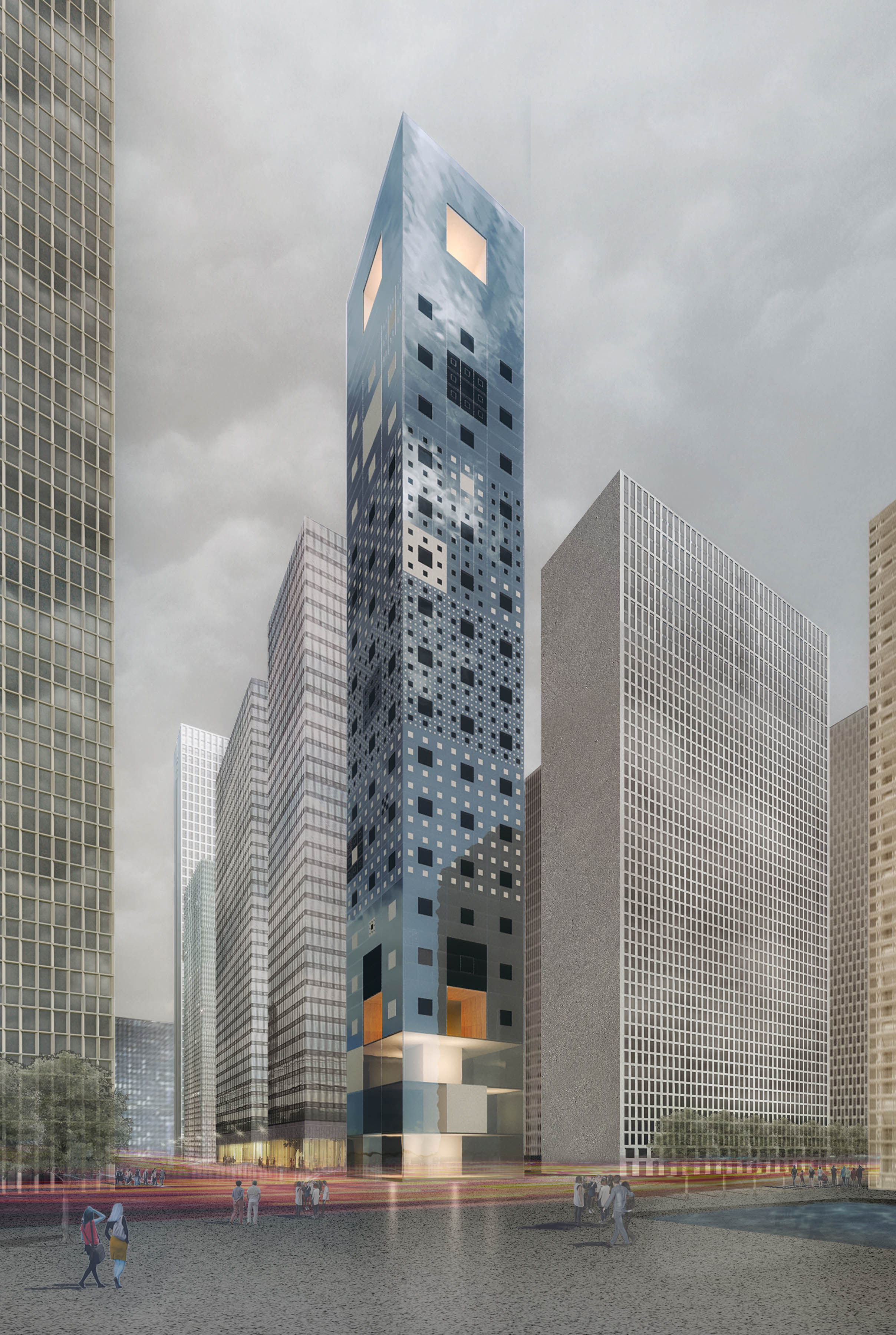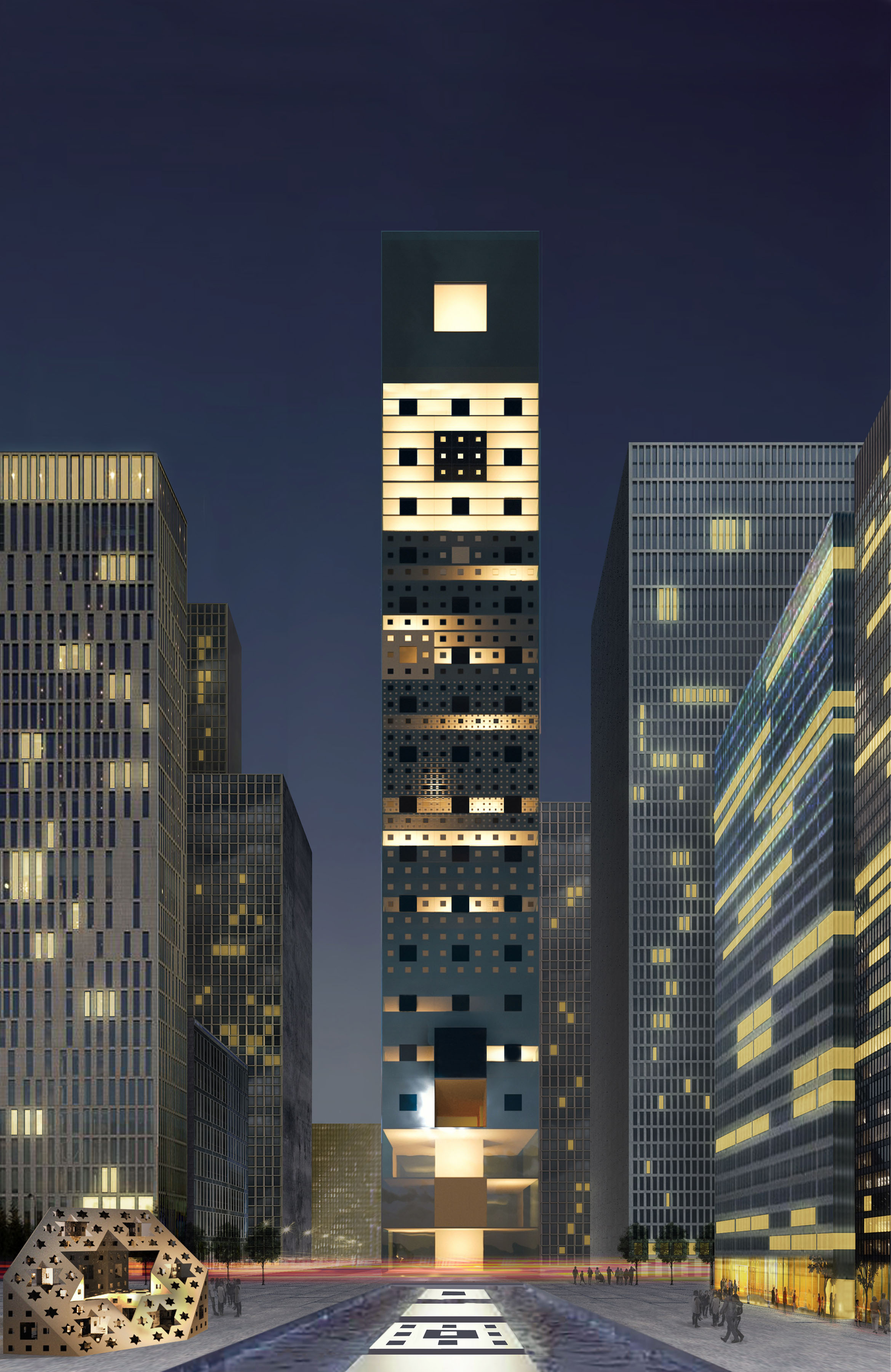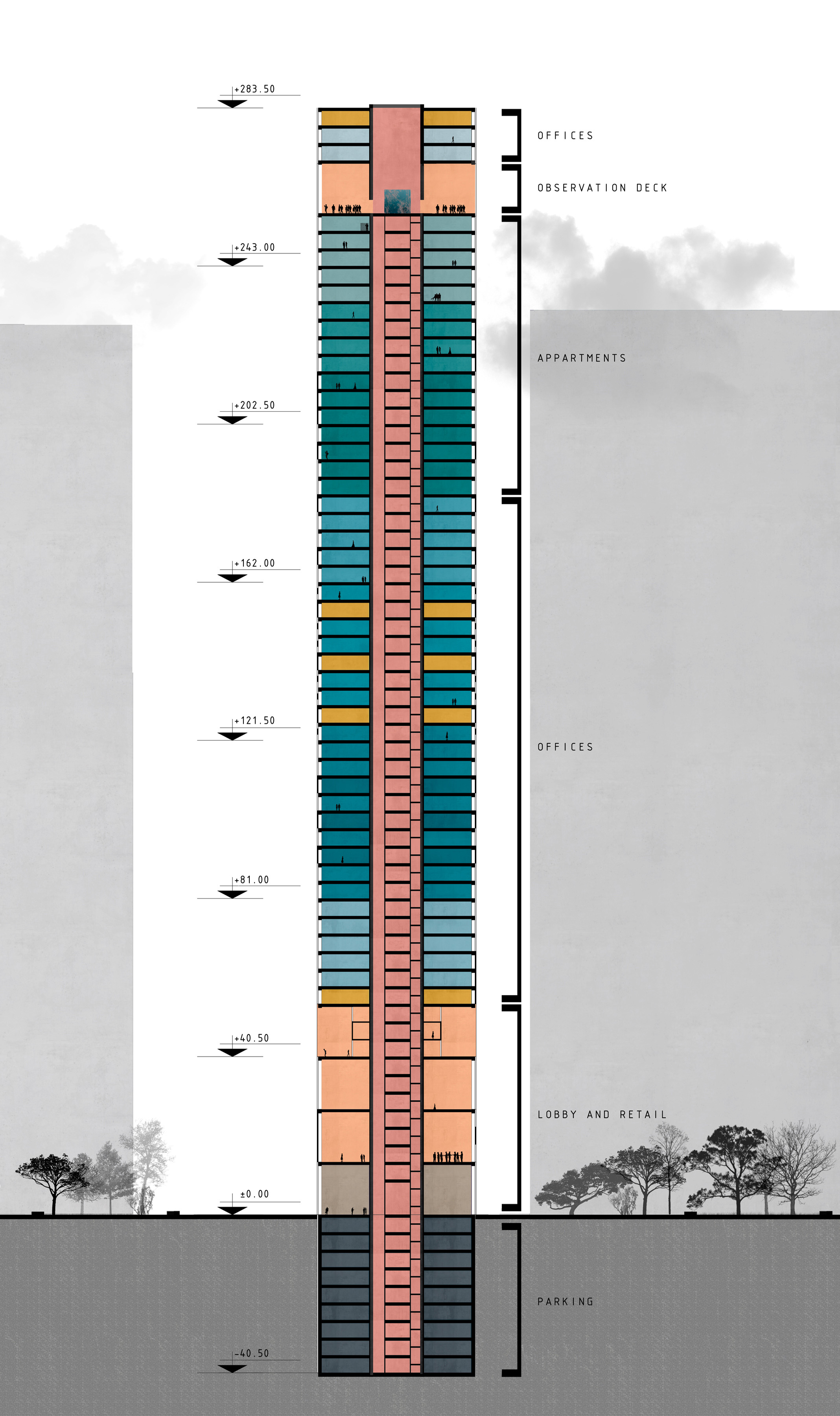Sierpinski-Menger Tower

Project year: 2018
PA: ANANYAN Telemak
Architects: MARTIROSYAN Hayk, HYUSISYAN Armen, NAZARYAN Svetlana, GHAZARYAN Irina
Inspiration
The source of inspiration for this work is so-called “Mathematical Chaos Games”. Fractal Geometry thoroughly studies and explores such phenomenon of chaos in nature. This field of mathematics is closely associated with the names of such prominent scientists as Mandelbrot, Prigogine and Barnsley, who argue that the border of conflicting forces is not a chaos, but a spontaneous emergence of self-organization at a higher level of cognition.
Concept
It has been proven that chaos is the highest form of order, the main principle of which is disorder, agitation and stimulating influence. The theory of chaos is described in detail in the works of Peters. Through a rigorous mathematical and computational methodology, the concept of chaos is essentially the first one to successfully simulate and reproduce complex forms and flows of turbulence.
The principles of fractal geometry appear in the basis of parametric and digital modeling. Such mathematical monsters as the Sierpinski square (pic. 1), Urysohn’s function (pic. 2), the Cantor Set (pic. 3), and the Menger Sponges (pic. 2) occur in the foundation of architectural and artistic concepts.

The Sierpinski-Menger Tower, an urban grid and a network of webs, is nothing more than a recursion, a peculiar projection of one within the other in a vertical plane, with a new shape and a rhythm of iterations.
Self-reproducing Sierpinski squares or infinite self-reproducing Menger cubes are Mathematical Games in Chaos. These are infinitely repetitive iterations of a geometric shape, which create fascinating fractal drawings that caress the eyes and captivate the mind.
The understanding natural fractality affects the architectural representation of the urban environment. Its analysis from the viewpoint of fractal theory and the subsequent modeling of the infrastructure of urban space has always been used in the practice of urban planning.
It seems that the peculiar interpretation of the digital code in three-dimensional space (in the chaotic urban environment of a large modern megalopolis) harmoniously blends in with various urban planning structures.

Architecture
The building layout is a square that reflects the Sierpinski square. In the central square there is a bearing extended barrel, which increases the bearing characteristics of the system, and allows to place the necessary vertical connections and communications, all inside the structure. The building has a simple and rational system and a planning solution with high efficiency of area use, a convenient functional zoning and navigation. This is an absolutely logical and optimized carrier system, which not only has a convenient planning, but is a memorable structure that stands out among hundreds of fused images of globalized architecture in modern megacities.
In the early 21st century, an era of endless disputes between postmodernists, who are the proponents of robotization, digitalization, parametricism or sustainable development, this decision simultaneously goes with the current trends of development.
Function
At an altitude of +36 meters is a restaurant complex with open panoramic loggias with panoramic views of the city.
At the mark of +230 m there is a lounge bar, a tower club and an observation deck with views of the bustling city from a bird’s eyeview.
In terms of the colour solutions, the shades of gray-blue-green (petroleum, sea-blue and turquoise) are suggested. It is also possible to use yellow and orange colours to achieve greater artistic expressiveness.

